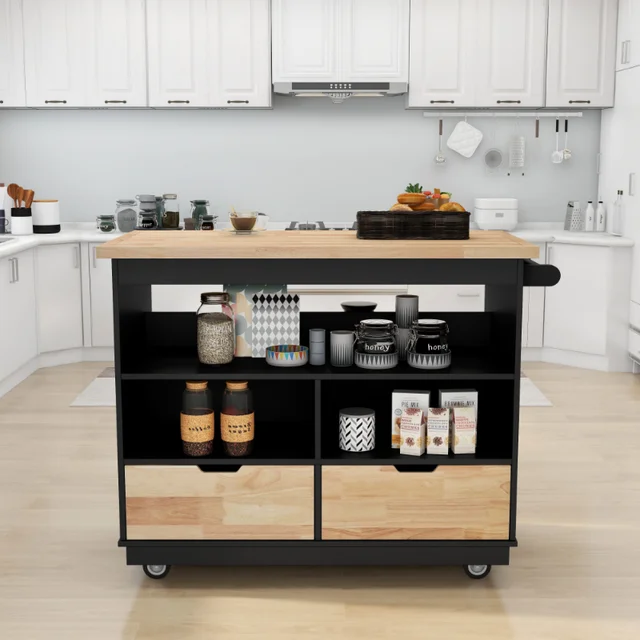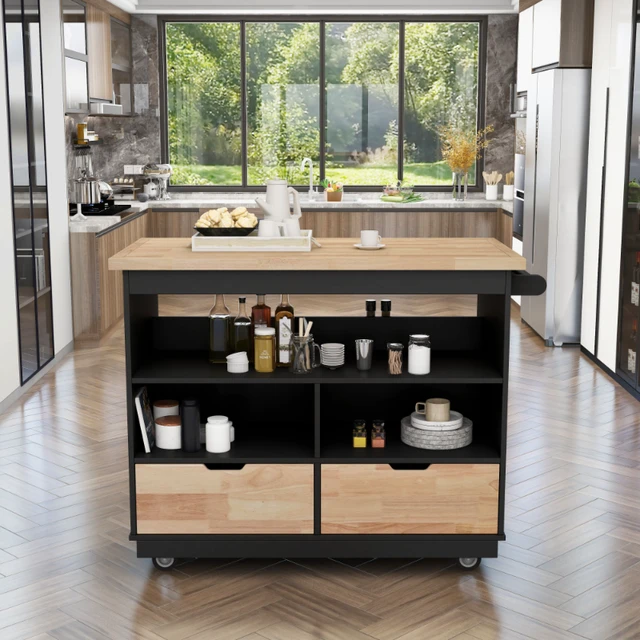 Introduction:
Introduction:
Kitchen furniture plays a crucial role in our home decoration, not only providing functionality but also contributing to the overall aesthetic appeal. A kitchen island is a popular and versatile addition to any kitchen, offering extra workspace, storage, and a gathering place for family and friends. However, the cost of a kitchen island can vary widely depending on several factors. In this article, we will explore the cost considerations related to kitchen islands, helping you make informed decisions when planning your kitchen renovation or upgrade.
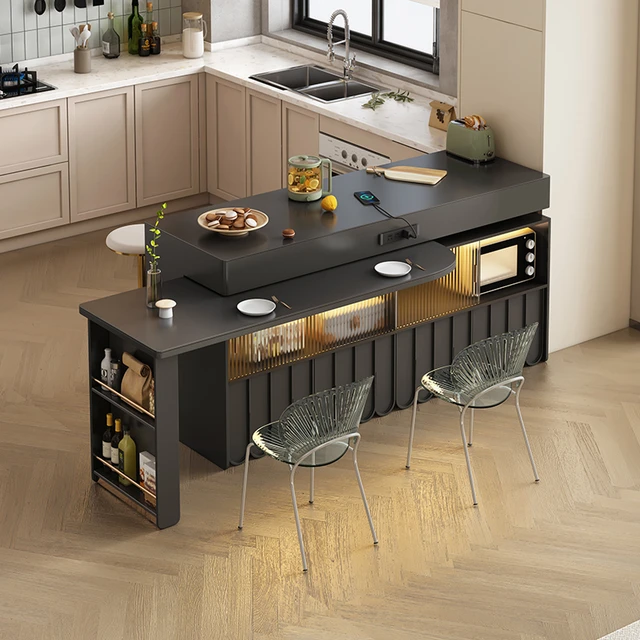 Some of the advantages of having a kitchen island:
Some of the advantages of having a kitchen island:
Kitchen islands offer numerous advantages and enhance the functionality and aesthetics of a kitchen. Here are some of the advantages of having a kitchen island:
Additional Storage Space:
Kitchen islands often come with built-in cabinets, drawers, or shelves, providing extra storage space for cookware, utensils, small appliances, and pantry items. This helps to keep the kitchen organized and clutter-free.
Increased Countertop Space:
Kitchen islands provide additional countertop space, offering more room for food preparation, meal serving, or setting up a buffet during gatherings. The extended workspace is particularly beneficial for households with multiple cooks or for those who enjoy entertaining.
Versatile Workstation:
Kitchen islands can serve as a versatile workstation, allowing for various kitchen tasks to be completed simultaneously. The island can be used for chopping, mixing, or baking while other areas of the kitchen remain available for cooking or cleanup.
Additional Seating:
Many kitchen islands include a seating area, such as a built-in breakfast bar or counter stools. This provides a casual dining or gathering spot within the kitchen, making it convenient for quick meals, socializing, or overseeing children’s activities while cooking.
Enhanced Kitchen Workflow:
By strategically placing a kitchen island, the workflow in the kitchen can be optimized. With a well-designed layout, the island can act as a central point, allowing easy access to different areas and appliances within the kitchen triangle (sink, stove, refrigerator).
Design Feature:
Kitchen islands can serve as a focal point in the kitchen and contribute to the overall design aesthetic. They offer an opportunity to incorporate unique materials, colors, or architectural details that enhance the visual appeal of the space.
Multi-Functional Use:
Kitchen islands have the potential for multi-functional use beyond food preparation. They can be used as a home office space, a homework area for children, or a place for crafts and projects. This versatility allows the kitchen to adapt to various needs and lifestyles.
Overall, kitchen islands enhance the functionality, storage capacity, and socialization potential of a kitchen while adding architectural interest and value to the space. They cater to a range of needs and preferences, making them an attractive addition to any kitchen design.
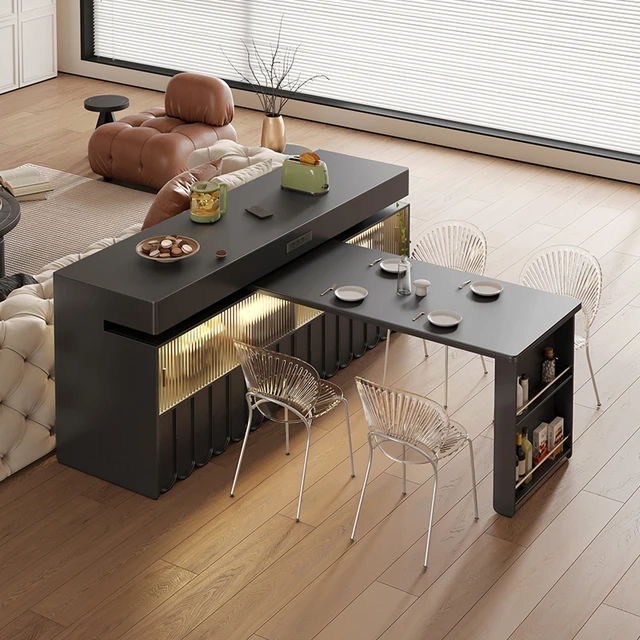 Types of Kitchen Islands
Types of Kitchen Islands
Portable or Freestanding Islands:
Portable or freestanding kitchen islands are standalone units that can be moved around the kitchen.
These islands are generally more affordable compared to built-in options.
Built-in Islands:
Built-in or custom kitchen islands are seamlessly integrated into the kitchen layout.
These islands are typically more expensive due to the customization and professional installation required.
Cost Factors of Kitchen Islands
Size and Materials:
The size of the kitchen island directly impacts its cost. Larger islands require more materials, increasing the overall expense.
The choice of materials, such as wood, granite, marble, or quartz, also affects the cost, with higher-end materials generally being more expensive.
Design and Customization:
Intricate designs, unique shapes, or customized features like built-in appliances or additional storage can drive up the cost of a kitchen island.
Customization and personalized details often require skilled craftsmanship, resulting in higher labor costs.
Countertop and Cabinetry:
The type and quality of the countertop material, such as laminate, solid surface, or natural stone, impact the cost of the island.
Similarly, the choice of cabinetry, including its style, finish, and hardware, influences the overall expenses.
Installation and Additional Costs
Professional Installation:
Hiring professionals for the installation of a built-in kitchen island is recommended to ensure proper fitting and functionality.
Installation costs vary depending on the complexity of the design and the need for plumbing or electrical work.
Plumbing and Electrical Work:
If the kitchen island includes a sink, dishwasher, or electrical outlets, additional plumbing or electrical work may be required.
These additional installations can increase the overall cost of the project.
Accessories and Features:
Kitchen island accessories such as bar stools, pendant lighting, or specialized storage solutions are additional costs to consider.
These accessory items contribute to the functionality and aesthetics of the kitchen island but can impact the overall budget.
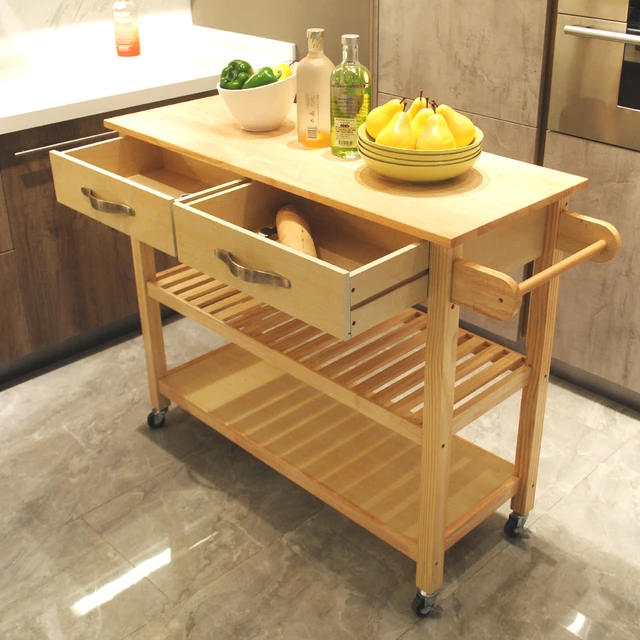 Budgeting and Alternatives
Budgeting and Alternatives
Setting a Budget:
Before embarking on a kitchen island project, determine a realistic budget based on your financial situation and priorities.
Account for both the direct costs of the island itself and the associated installation and additional expenses.
Cost-saving Alternatives:
If a custom-built kitchen island is out of your budget, consider options such as repurposing existing furniture, using prefabricated islands, or DIY projects to achieve a similar look and functionality at a lower cost.
Research and Comparison:
Do thorough research and compare prices, materials, and services from various suppliers and contractors.
This will help you find the best value for your money without compromising on quality.
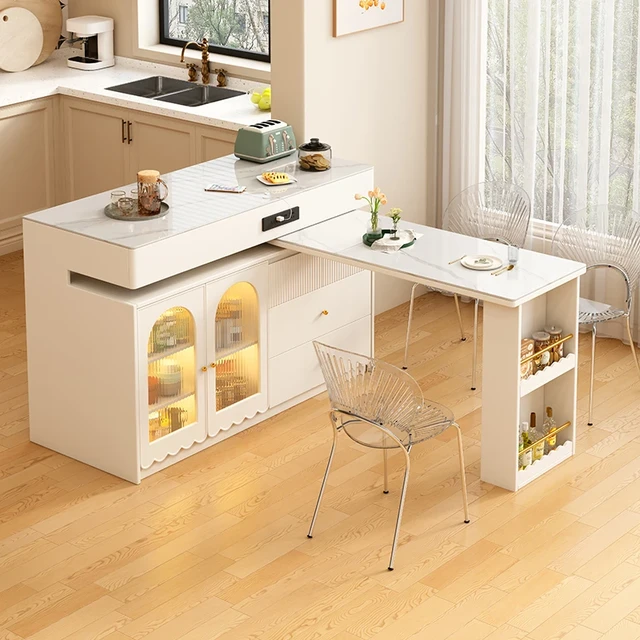 Conclusion:
Conclusion:
Kitchen islands can greatly enhance the functionality and aesthetic appeal of your kitchen, but their cost can vary significantly based on several factors. By understanding the cost considerations related to size, materials, design, installation, and additional features, you can plan and budget for your kitchen island project effectively. Be sure to set a realistic budget, explore cost-saving alternatives, and conduct thorough research to find the best options that align with your requirements and financial constraints. With proper planning and consideration, you can add a beautiful and functional kitchen island to your space without breaking the bank.
